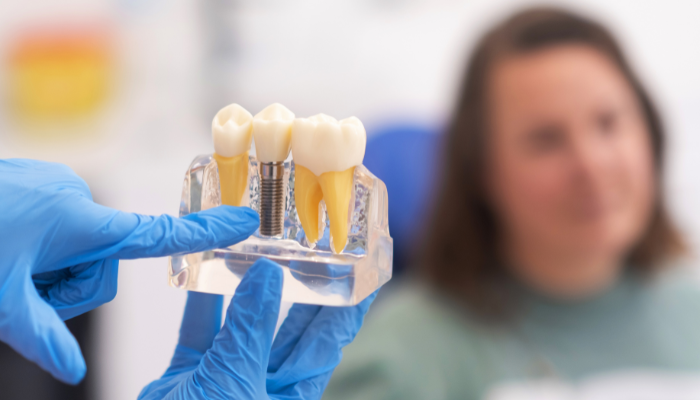Introduction
In the realm of healthcare, where innovation meets patient care, minimally invasive musculoskeletal pain medicine has emerged as a beacon of hope for those seeking effective relief without the need for extensive procedures. At the intersection of technology and medical expertise, this advanced approach has been transforming the landscape of pain management. Let’s delve into the intricacies of this revolutionary field and explore the myriad benefits it offers.
Understanding Minimally Invasive Techniques
Defining Minimally Invasive Musculoskeletal Pain Medicine
Minimally invasive procedures involve accessing the affected area with minimal disruption to surrounding tissues, resulting in reduced trauma and quicker recovery times. In the context of musculoskeletal pain medicine, this approach targets conditions affecting the bones, joints, muscles, ligaments, and tendons.
Precision in Treatment
One of the key advantages of minimally invasive techniques lies in their precision. Physicians utilize advanced imaging technologies to navigate and precisely target the source of pain. This level of accuracy not only enhances the effectiveness of the procedure but also minimizes the risk of complications.
Conditions Treated with Minimally Invasive Musculoskeletal Pain Medicine
Osteoarthritis Management
For individuals grappling with osteoarthritis, a common musculoskeletal condition, minimally invasive interventions offer relief by addressing joint pain and inflammation. Procedures such as arthroscopy enable surgeons to assess and treat joint issues with minimal disruption, leading to improved joint function.
Ligament and Tendon Repair
Injuries to ligaments and tendons can be debilitating, impacting mobility and overall quality of life. Minimally invasive techniques, such as tendon repair and reconstruction, provide targeted solutions for restoring function without the need for extensive open surgery.
Spinal Interventions
Back pain, a prevalent musculoskeletal issue, finds effective resolution through minimally invasive spinal interventions. Techniques like vertebroplasty and disc decompression not only alleviate pain but also contribute to a faster recovery, allowing individuals to resume their daily activities sooner.
Advantages of Minimally Invasive Musculoskeletal Pain Medicine
Quicker Recovery Times
Traditional surgical procedures often entail prolonged recovery periods. In contrast, minimally invasive interventions significantly reduce downtime, enabling patients to return to their routine activities with minimal delay.
Reduced Risk of Infection and Complications
The smaller incisions made during minimally invasive procedures result in a lower risk of infections and complications. This not only enhances patient safety but also contributes to a more positive overall healthcare experience.
Pain O Soma 500Mg is a prescription medicine that treats muscle pain in the most effective manner. It also offers quick relief from any discomfort which is caused by the muscle contractions. It provides relief from acute painful muscle to the adults. It also treats skeletal condition in the adults. The medicine should be taken only by a Doctor’s advise.
Minimal Scarring
The cosmetic aspect of minimally invasive procedures should not be underestimated. Smaller incisions translate to minimal scarring, fostering a more aesthetically pleasing outcome for patients.
The Future Landscape of Minimally Invasive Musculoskeletal Pain Medicine
Technological Advancements
As technology continues to advance, so does the landscape of musculoskeletal pain medicine. Cutting-edge innovations, such as robotic-assisted procedures and advanced imaging modalities, are poised to further refine the precision and efficacy of minimally invasive interventions.
Patient-Centric Care
The shift towards patient-centric care is a driving force behind the evolution of musculoskeletal pain medicine. Minimally invasive techniques align seamlessly with this trend, offering tailored solutions that prioritize individual patient needs and preferences.
Conclusion
In conclusion, the field of minimally invasive musculoskeletal pain medicine stands at the forefront of medical progress, offering a beacon of hope for those seeking effective and efficient pain relief. The precision, reduced recovery times, and myriad advantages make this approach a game-changer in the realm of pain management.
Unraveling the Intricacies of Muscle, Bone, and Joint Injuries: A Comprehensive Guide
In the realm of health and well-being, the intricate interplay between muscles, bones, and joints forms the foundation of our physical mobility and functionality. However, injuries and problems within this dynamic trio can disrupt our daily lives and hinder optimal performance. In this comprehensive guide, we delve into the nuances of muscle, bone, and joint issues, exploring their definitions, causes, and effective strategies for prevention and management.
Understanding Muscle, Bone, and Joint Injuries
Defining the Trio: Muscles, Bones, and Joints
Before delving into the complexities of injuries, it’s crucial to understand the fundamental roles of muscles, bones, and joints in our bodies. Muscles, responsible for movement and stability, work in tandem with bones, the structural framework of our anatomy. Joints, acting as connectors, facilitate smooth motion and flexibility.
Common Injuries and Problems
1. Strains and Sprains
Muscle strains and ligament sprains are common injuries that can result from overexertion, sudden movements, or improper lifting techniques. These injuries often lead to pain, swelling, and restricted movement, necessitating timely intervention.
Pain O Soma 350Mg is a prescription remedy that relieves muscle pain. The pill works with the quick-term treatment of acute neck and decreases returned aches. The tablet is referred to as a muscle relaxant. It relieves your neck and decreases again ache with the energetic aspect of Carisoprodol. The pill works as a brief restoration muscle relaxant that works with using Pain O Soma 350 Mg tablets. Carisoprodol is the composition of the drug. It is normally powerful with the elimination of mild pain and discomfort. The trouble might also happen after damage or surgical treatment.
2. Fractures and Breaks
Bones, though sturdy, are susceptible to fractures and breaks, especially in high-impact situations or due to underlying conditions like osteoporosis. Prompt medical attention is essential for proper healing and prevention of complications.
3. Arthritis
Joint problems, such as arthritis, encompass a range of conditions causing inflammation and pain in the joints. Osteoarthritis, rheumatoid arthritis, and gout are examples, each demanding tailored approaches to management.
Causes of Muscle, Bone, and Joint Issues
Understanding the diverse causes behind these issues is pivotal in formulating effective preventive measures and treatment plans.
1. Overuse and Repetitive Strain
Frequent and repetitive use of muscles and joints without adequate rest can lead to overuse injuries. Repetitive strain, common in certain occupations and sports, contributes to chronic problems if not addressed promptly.
2. Trauma and Accidents
High-impact trauma, such as falls or collisions, can result in fractures, dislocations, and severe joint injuries. Accidents during physical activities or sports heighten the risk of immediate damage.
3. Aging and Degeneration
As we age, our muscles, bones, and joints undergo natural wear and tear. Conditions like osteoporosis and degenerative joint diseases become more prevalent, necessitating proactive measures to maintain musculoskeletal health.
4. Poor Posture and Body Mechanics
Incorrect posture and body mechanics can strain muscles and joints, paving the way for chronic issues. Maintaining good posture, especially during prolonged sitting or standing, is crucial for prevention.
Preventive Measures and Management Strategies
1. Regular Exercise and Conditioning
Engaging in a well-rounded exercise routine that includes strength training, flexibility exercises, and cardiovascular activities is paramount for maintaining the health of muscles, bones, and joints. This helps in preventing overuse injuries and promoting overall musculoskeletal resilience.
2. Adequate Rest and Recovery
Balancing physical activity with sufficient rest and recovery is essential in preventing overuse injuries. This is particularly crucial for individuals involved in repetitive or strenuous activities.
3. Ergonomic Practices
Incorporating ergonomic practices in daily life, whether at work or home, can significantly reduce the risk of musculoskeletal problems. Proper desk and chair heights, ergonomic tools, and regular breaks contribute to maintaining optimal health.
4. Healthy Lifestyle Choices
Adopting a healthy lifestyle, including a balanced diet rich in calcium and vitamin D, is instrumental in promoting bone health. Avoiding smoking and excessive alcohol consumption further supports overall musculoskeletal well-being.
Conclusion: Nurturing Musculoskeletal Health
In conclusion, unraveling the intricacies of muscle, bone, and joint injuries provides the foundation for informed preventive strategies and effective management. By understanding the causes, embracing preventive measures, and fostering a proactive approach to musculoskeletal health, individuals can empower themselves to lead a life free from the constraints of these common issues.





